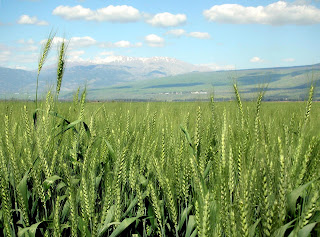THE GREEN REVOLUTION
What is Green Revolution?
There were many revolutions occurred throughout the history such as American Revolution and Industrial Revolution. The Green Revolution occurred in in mid and late 20th century and in this period global agricultural yield was increased dramatically.
Why Productivity increased?
- The productivity in agriculture field was due to new technological advances in agriculture.
- New chemical fertilizers, herbicides and pesticides were made.
- The chemical fertilizers were used to increase the nutrient content in crops and to provide better yield of crops.
- Herbicides and pesticides were used to kill the pests, herbs and insects. These also controlled the diseases.
- High yield crops were produces and used in the field. These are the crops that are designed to produce more yield.
- Multiple Cropping was also adopted in that period. Multiple cropping is the method in which two or more than two crops are grown in the field throughout thee year to gain more yield. The productivity is gained throughout the year via any of the crops.
Benefits of Green Revolution
- Production of large amount of food that meet the demand of increasing human population
- Norman Borlaug is a famous name when we talk about Green Revolution. His contribution in Green Revolution was great. In 1940s , he produces a strain of wheat that was short in size in Mexico. The wheat has the ability to resist the disease and due to its short nature the wheat was resistant from wind damage. This wheat production was tripled in next twenty years. Through this the food production in Mexico was increased. The other countries also took help from Norman Borlaug to produce wheat in their countries. He helped other developing countries to produce the wheat and to increase their food supply. From Mexico the the export of wheat was also done. He won the Noble peace peace for his remarkable work. He was able to increase the crop yield and help prevent the starvation in many developing countries.
- In addition to food production, the Green Revolution also made it possible to grow more crops at the same time on same land (multiple cropping). It reduced the cost of production and made the prizes low in the market of food.
- Multiple cropping has also the benefit t he environment in a way that forest cutting will not be necessary to convert the forest land to agriculture land for the need to grow more crops.
- The land not used by agriculture becomes a natural habitat for animals and plants.
Problems with Green Revolution
- Inspite of many benefits the problems were also faced.
- The use of chemical fertilizers, herbicides and pesticides have the bad effect environment.
- These materials led to the pollution in soil and water.
- Soil quality was disturbed. Soil fertility was reduced and soil erosion like problems were caused.
- Water was polluted that affect the people as well.
- The increase in crop yield required more water. This caused a pressure on the natural water reserves. That led to water shortages and droughts conditions.
- More energy was consumed in this period due to the utilization of more fossil fuels, machines inspite of human and animal power. Between 1990 and 2000 about 80 % of energy was consumed in agriculture. This consumption of more fossil fuels caused the pollution in environment.


Comments
Post a Comment